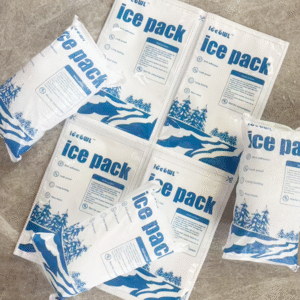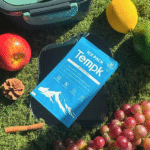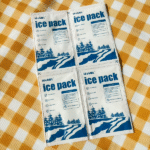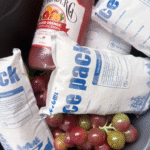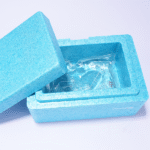Pharmaceutical Cold Chain Packaging: What You Need to Know for 2025
Pharmaceutical cold chain packaging plays a crucial role in ensuring the safe and efficient transportation of temperature-sensitive medicines. As we enter 2025, the importance of high-quality packaging for pharmaceuticals becomes even more critical. In this article, we will dive into the essentials of pharmaceutical cold chain packaging, its key components, and how to stay ahead of emerging trends to optimize your supply chain operations.
-
What is pharmaceutical cold chain packaging, and why is it essential?
-
What are the critical components of pharmaceutical cold chain packaging?
-
How are emerging technologies shaping the future of cold chain packaging for pharmaceuticals?
What Is Pharmaceutical Cold Chain Packaging and Why Is It Essential?
Pharmaceutical cold chain packaging refers to the materials and systems used to protect temperature-sensitive drugs during transportation and storage. Maintaining the correct temperature throughout the entire supply chain is vital to preserve the integrity and efficacy of these medicines.
Understanding the importance of cold chain packaging helps prevent product degradation, ensuring medicines remain effective and safe for consumption. This is especially critical for vaccines, biologics, and certain antibiotics that must be stored and transported within a narrow temperature range.
The cold chain packaging process involves using insulated boxes, gel packs, and refrigerated containers, along with advanced monitoring devices to track temperatures in real time. These methods ensure that the pharmaceutical products reach their destination safely and within the required temperature range.
Key Components of Pharmaceutical Cold Chain Packaging
-
Insulated Materials: These are the backbone of pharmaceutical cold chain packaging. They include insulated boxes, wraps, and containers designed to maintain the temperature for an extended period.
-
Refrigerants: Common refrigerants like dry ice, gel packs, and phase change materials (PCMs) are used to keep the temperature controlled during transit.
-
Temperature Monitoring Devices: These devices track and record temperature variations, providing real-time data on the conditions of the products.
-
Containers & Shippers: Packaging types such as cryogenic containers and refrigerated shipping containers ensure the product stays within its optimal temperature range.
How to Select the Right Pharmaceutical Cold Chain Packaging
When selecting pharmaceutical cold chain packaging, it’s essential to consider various factors:
-
Product Requirements: Different products have different temperature needs. For example, vaccines may need to be stored at ultra-low temperatures, while some biologics may require just a refrigerated environment.
-
Duration of Shipment: The length of time the product will be in transit determines the type of refrigerant and insulation required.
-
Compliance with Regulations: Ensure that your packaging meets all relevant GDP (Good Distribution Practice) standards and FDA regulations.
| Packaging Factor | Temperature Range | Best for | Common Use |
|---|---|---|---|
| Insulated Boxes | 2°C to 8°C | Vaccines | Short-term transport |
| Gel Packs | -20°C to -70°C | Biologics | Long-haul shipments |
| Dry Ice | -78.5°C | Frozen Goods | Extremely cold transport |
| Refrigerated Containers | 2°C to 8°C | All Temp-sensitive products | Extended duration |
How Emerging Technologies are Shaping the Future of Pharmaceutical Cold Chain Packaging
The pharmaceutical industry is witnessing rapid advancements in cold chain technology, especially for packaging. IoT-enabled monitoring, smart packaging systems, and blockchain are transforming the way the supply chain operates.
-
IoT Monitoring Systems: These systems allow real-time temperature tracking and data logging. IoT devices send alerts if temperatures fall outside acceptable ranges, ensuring immediate action can be taken.
-
Smart Packaging: Advances in smart packaging technology enable packaging to self-regulate temperatures and even provide feedback on the condition of the product inside.
-
Blockchain: Blockchain technology ensures complete traceability and transparency, enhancing the security and efficiency of the pharmaceutical cold chain.
Practical Tips for Optimizing Your Pharmaceutical Cold Chain Packaging
-
Choose the right insulation: Match the insulation material to the temperature needs of the product.
-
Integrate temperature sensors: Use devices that can track temperature changes in real-time and store the data for compliance and review.
-
Plan for worst-case scenarios: Prepare for disruptions in the supply chain by using additional refrigerants and backup systems.
Real-life Example: In 2024, a pharmaceutical company used advanced IoT sensors in their cold chain packaging for vaccine distribution, which helped reduce product loss by 30% and ensured compliance with stringent temperature requirements during transport.
Key Trends in Pharmaceutical Cold Chain Packaging for 2025
As the industry evolves, sustainability and digitalization are becoming increasingly important in cold chain packaging.
-
Sustainability: Packaging materials are shifting towards more eco-friendly options, such as biodegradable refrigerants and recyclable insulated boxes.
-
Digitalization: Integration of digital tools and cloud-based platforms for remote monitoring is becoming a standard for companies seeking to optimize cold chain operations.
Insights from the Market
-
Sustainability efforts: Over 60% of pharmaceutical companies are investing in sustainable packaging solutions to reduce their carbon footprint and comply with international regulations.
-
Remote monitoring: The use of cloud-based monitoring systems has increased by 50% in the last year, allowing companies to monitor cold chain conditions from anywhere.
Frequently Asked Questions
What is the temperature range for pharmaceutical cold chain packaging?
Pharmaceutical cold chain packaging typically maintains temperatures between 2°C to 8°C for most drugs, while some vaccines and biologics may require ultra-low temperatures of -20°C or even lower.
How do I know if my cold chain packaging is compliant with regulations?
Ensure your packaging meets the GDP (Good Distribution Practice) standards and FDA regulations. It’s also crucial to use temperature monitoring devices that document compliance during transport.
Conclusion & Recommendations
Pharmaceutical cold chain packaging is an essential part of the supply chain, ensuring that temperature-sensitive products are delivered safely and effectively. Staying updated with the latest trends and technologies can improve efficiency and compliance.
Next Steps: If you’re looking to improve your pharmaceutical cold chain packaging, focus on selecting the right materials, integrating IoT monitoring devices, and adopting sustainable packaging practices to meet future demands.
About Tempk
At Tempk, we specialize in high-quality pharmaceutical cold chain packaging solutions. Our products are designed to meet strict regulatory requirements, ensuring your pharmaceutical shipments arrive safely and on time. With years of expertise, we offer cutting-edge, eco-friendly packaging options for a sustainable future.
Contact us today for a consultation or to learn more about our pharmaceutical cold chain packaging solutions!






